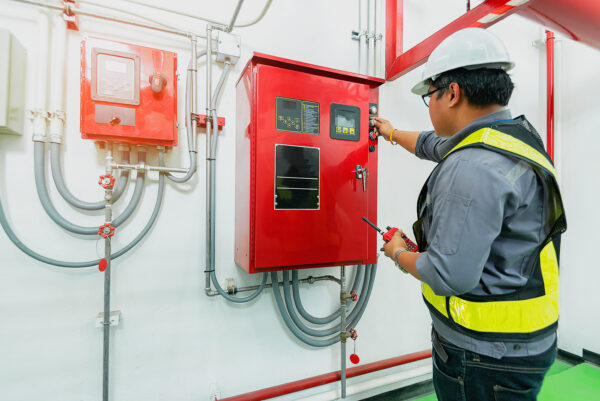 When was the last time you had your building inspected, or conducted an inspection of your own? A lack of proper safety measures for your building puts an additional risk on employees, tenants, and/or visitors when they step on your property. Identifying these types of hazards in a timely manner can make a big difference.
When was the last time you had your building inspected, or conducted an inspection of your own? A lack of proper safety measures for your building puts an additional risk on employees, tenants, and/or visitors when they step on your property. Identifying these types of hazards in a timely manner can make a big difference.
Here are 6 ways you can optimize your building and property safety:
1. Inspect Heating Equipment, Chimneys and Dryer Vents
Is the heating, ventilation and air conditioning equipment (HVAC), boilers and chimneys inspected for your property on a scheduled timeline? Boilers, heating equipment and dryer vents can also become dangerous when not properly maintained on a scheduled basis. If there are chimneys on the property, they can pose a serious fire hazard when there’s buildup in the flue or stack. These risks can be prevented by having them inspected by a professional, and if the equipment is well-maintained, there’s a bonus in heating efficiency, reliability, safety and extended life of the equipment.
2. Examine Electrical Wiring
Inspecting the electrical wiring in your building is vital. Faulty wiring is a significant risk factor and redoing electrical wiring can be costly. Infrared scanning of the electrical system by a trained professional can determine if the system is being overloaded, which could affect the wiring throughout the building and is a major fire risk. Additionally, having an electrical preventative maintenance program in place is recommended. Working with your electrical contractor to conduct inspections on a periodic basis can reduce the risk of faulty electrical systems.
3. Ensure Fire Alarms and Sprinkler Systems Are Properly Inspected and Maintained
Have the building fire alarm and sprinkler system been inspected, tested and maintained at the required intervals? To ensure the system will operate correctly when needed, working with a vendor who can conduct inspections, testing, and maintenance per NFPA 13 and 25 (and any other local/state regulatory requirements) is essential.
4. Post Visible Evacuation Procedures
When an emergency situation arises that requires evacuation, such as a fire, having visible evacuation route maps posted in conspicuous areas will assist with a smooth evacuation process. These signs will vary depending on the size and layout of your buildings, but are usually required in elevator lobbies and near stairwell entrances.
5. Implement Routine Inspections and Preventative Maintenance Schedules
Preventative maintenance for building systems, such as plumbing, very important to help catch issues before they turn into something more. Working with your preferred plumbing contractor to set up routine preventative maintenance and inspections could help prevent costly water damage losses.
Proper roof and grounds inspections are very important, especially after storms when safety hazards could suddenly arise. It is a good practice to conduct roof inspections quarterly, before each change of season. Conducting interior inspections to identify hazards such as frayed carpets, water damage, blocked or damaged stairways, etc. is a proactive measure that can assist in quickly resolving safety issues.
An area that is often overlooked is fire safety. Ensure all fire extinguisher inspections are up-to-date and appropriate personnel know how to use them should the need arise. Emergency exit lighting and exit signage should be inspected monthly for proper operation. Make sure that flammable chemicals and materials are properly stored, and that storage is kept at least 18 inches from sprinkler heads to allow them to function as designed.
6. Make Your Properties Easy to Find
One way to help improve the safety of your property is to make sure the building numbers are large enough to be seen from the street. This can help emergency personnel quickly locate your property if needed. Clearing other obstructions such as tree limbs, bushes, and other signage that may impede visibility of building numbers is also recommended.
For more information on property risk management, contact a member of the ‘A’ Team!




